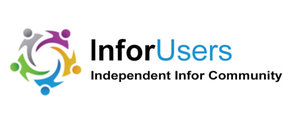Author: Bradley Hunter & Doug Tolley
Written: 07/17/2020
Let’s say that you are experiencing heartburn. You go to the doctor, who prescribes medication and a healthy diet. The problem is that the co-pay for the medication is expensive, and you can’t afford the diet the doctor ordered.
You check your bank account; it is fast approaching empty. Basically, you can either eat that day or buy the medication. You decide to deal with the pain and head to the nearest grocery store to stock up on ramen noodles.
Eventually, you find yourself in the ER with a heart attack. You get coronary bypass surgery, and you survive. But you have no health insurance, and you make very little, so both you and the hospital are stuck with bills that can’t be paid.
Here’s an intriguing question: how much could your PCP have influenced whether you ate right or bought medication?
The Social Determinants of Health
Recent statistics suggest that the social determinants of health—or the conditions in which people are born, live, work, and age—account for a large percentage of health outcomes, while the effect of clinical care is relatively smaller. Do patients have a place to live? Do they have adequate food? Are they employed? The answers to those questions can have a profound effect on patients’ health.
Traditionally, when healthcare organizations become aware of a need, they might pull out a pamphlet with information about the nearest food bank or housing organization and send patients on their way. Many organizations feel that by offering those references, they have done their duty. After all, what else can be done?
From March to April 2020, the national unemployment rate rose from 4.4% to a whopping 14.7%. That is the highest one-month increase in the entire history of unemployment data. That percentage has lowered by a few points in the past few months, but it is clear that people are still suffering. Unemployment is affecting people’s social and physical environment as well as their behavior, and that in turn is affecting their health.
How Technology Can Help
In these hard times, some healthcare facilities are very glad to have access to a new kind of software. Doctors can simply talk to their resources through the software and tell them that the patients are on their way. When patients show up at the referred facility, the resource notifies the healthcare organization. Communication becomes a closed loop. Patients are more likely to use community resources effectively, and doctors are more aware of the needs of patients and the help they are getting.
In 2011, James Rubin founded TAV Health. He created software that would address social determinants of health (SDOH) or software that would connect communities to enable better health and well-being. In 2015, Signify Health acquired TAV Health to build its SDOH capabilities.
Recently, KLAS published Signify Health Community Emerging Technology Spotlight on how Signify Health’s SDOH product is doing in organizations that have implemented it. The results were impressive. 100% of customers said that Signify Health Community offers everything that the vendor advertised. That includes access to a network of community-based organizations, a social record of patients’ experiences outside the health system, a privacy layer, advanced reporting capabilities, and a collaboration platform that documents the programs that patients participate in. The Signify Health product is doing remarkably well.
The Difference with Signify Health
One piece that distinguishes Signify Health from other SDOH vendors is their commitment to patient privacy. Patients may not want their bosses to know that they are seeing mental health counselors, for example. Signify Health Community assures that only those people who have a right to see the information will see it and that all state and federal privacy laws are followed.
Another piece that is remarkable about Signify Health Community is its scalability. 71% of the customers we interviewed told us that the product was easy to scale. That percentage is significant for a relatively new product.
Customers that have SDOH products like Signify Health Community love what they have and want more of it. While these products are still developing, the growth potential of the SDOH market is huge, and that is very exciting.
Still to Come
One function that customers are clamoring for is EMR integration. Doctors would love to open a patient’s medical record and see a magical pop-up from the SDOH product with a social record to compare to the patient’s health history. Is EMR integration possible? Probably. Is it going to take a lot of work to get there? Yes. Customers acknowledge that the goal is long term and that SDOH vendors may only be able to integrate their products with the major EMR vendors’ products. But once EMR integration becomes available, it could have a powerful impact on the quality of patient care.
One of our goals this year at KLAS Research is to provide healthcare organizations with a full report comparing several SDOH vendors. We have developed a framework and published several other spotlight reports on SDOH vendors. Stay tuned for a comprehensive look at what unique features each vendor offers and their performance levels.
Photo Credit: Adobe Stock, Mathew Hayward


